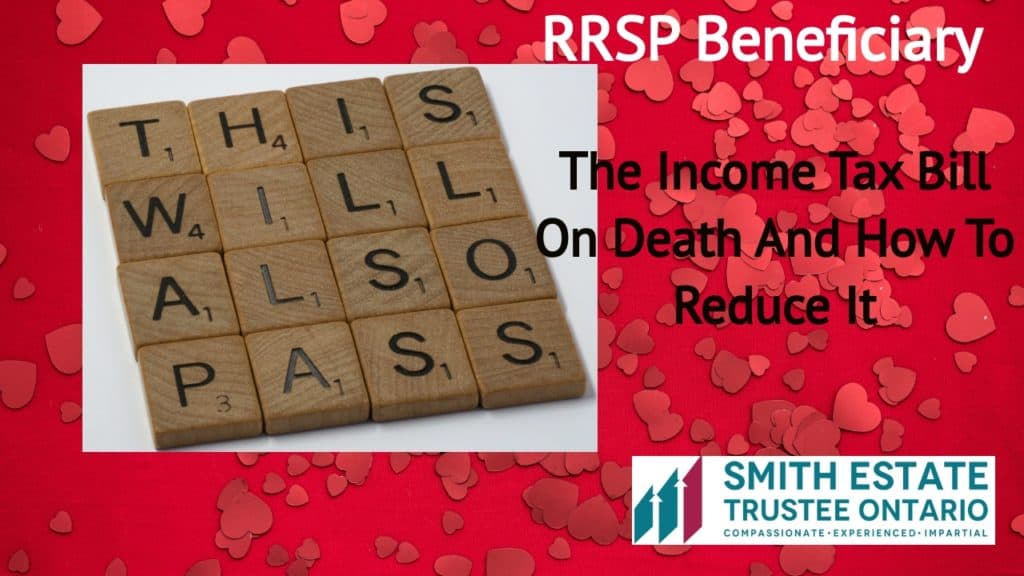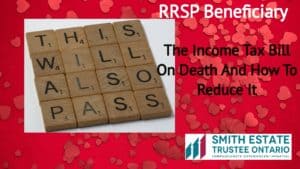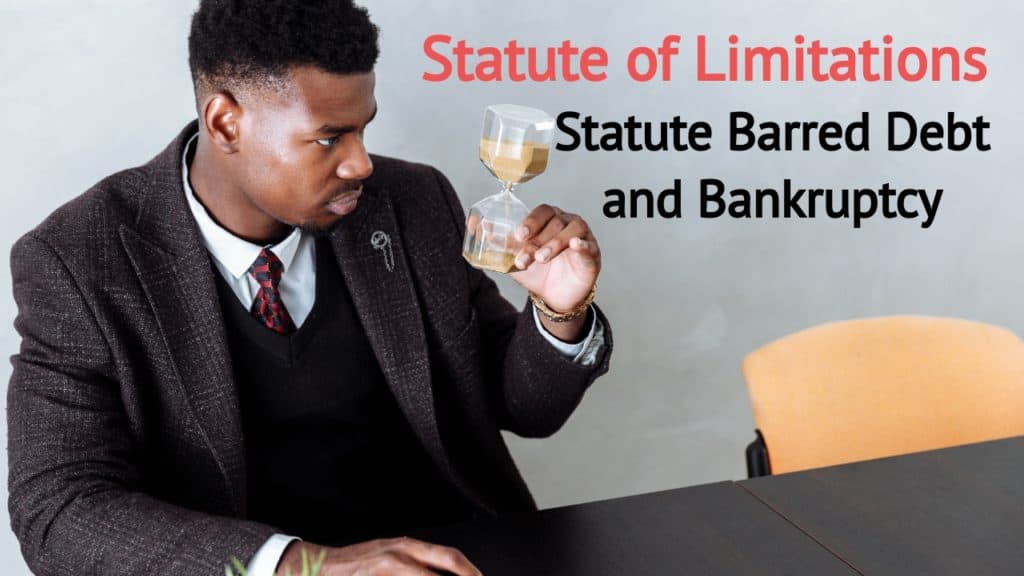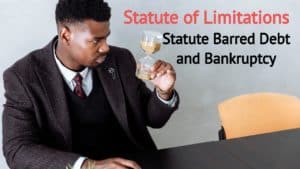
We hope that you and your family are safe, healthy and secure during this coronavirus pandemic. Ira Smith Trustee & Receiver Inc. is absolutely operational and Ira, in addition to Brandon Smith, is readily available for a telephone consultation or video meeting.
If you would prefer to listen to this Brandon Blog’s audio version, please scroll to the very bottom and click play on the podcast.
False pretences and bankruptcy introduction
Just because you have filed for bankruptcy, doesn’t mean you are free and clear of your debts. In fact, some debts, such as those obtained with the use of false pretences, may not be discharged through bankruptcy at all.
A creditor can file a form 31 proof of claim for a debt incurred by false pretences. However, it takes more than just stating it in a proof of claim. A court must have made that determination. If not, the debt can be ruled as dischargeable through bankruptcy. But if the court has made that determination and it is the basis of the claim, that debt will not be discharged upon the bankrupt receiving his or her bankruptcy discharge.
I have discussed the topic of false pretences and bankruptcy before, but based on a recent Ontario court decision, I need to break down the basics of this type of debt and how it relates to a person’s bankruptcy.
What is a false pretence?
A false pretence is a false claim or statement made to induce a person to part with property or to give some valuable thing or advantage. It is a criminal offence in Canada. False pretences are the main element of the crime. The essence of this common law offence is that a person knowingly makes a false statement of fact, intending to induce the victim to act on it to his/her detriment. The reason why the false pretence is punished is that it is a fraud on the public.
Some people choose to give false information when they apply for credit or an extension of credit to make their financial situation look better. This is often done by people who have no intention of repaying the debt and therefore use certain fake information with the intent of deliberately misleading the creditor. They are hoping that the potential creditor will not verify all the information. They can get away with this when they are not required to prove false information with the creditor.
Crimes of Dishonesty: What is the criminal offence of false pretences?
The offence of false pretences is a criminal offence that occurs when a person obtains property from another person by deceiving or defrauding the other person. This can be done either by a false representation of existing facts or by a false promise. The person must intend to defraud and in doing so possess the intent to commit an offence. This is a fairly complex offence under paragraph 362(1) of the Canadian Criminal Code and includes a wide variety of possible scenarios. More often than not, it involves obtaining personal property under false pretences.
Section 362(1) of the Criminal Code of Canada states:
“Every one commits an offence who
(a) by a false pretence, whether directly or through the medium of a contract obtained by a false pretence, obtains anything in respect of which the offence of theft may be committed or causes it to be delivered to another person;…”
If you have been charged with a criminal offence under subsection 362(1)(a) of false pretence in Canada, you need to ensure you have a good defence. Sometimes, it is a difficult offence to prove beyond a reasonable doubt. The only thing the Crown really needs to prove is that you made a false representation to obtain the property of another and that the other person believed you (and was therefore defrauded). It is up to you to ensure that you have a good defence.
But I am not writing this Brandon Blog to focus on criminal behaviour. Rather, I want to discuss this concept from the perspective of someone who might file an assignment into bankruptcy.

Debt arising from false pretences not released by the bankrupt’s discharge
Section 178 (1)(e) of the Bankruptcy and Insolvency Act (Canada) (BIA) states that an order of discharge does not release the bankrupt from any type of financial obligation or liability arising from obtaining property or services by false pretences or fraudulent misrepresentation other than a debt or liability that arises from an equity claim.
In the past, it was quite customary for a creditor seeking judgment for recovery of a debt who is alleging that the debt arises from circumstances caught by section 178(1)(e) of the BIA to also seek both the civil judgment for the money and also a declaration in the judgment that the debt is one of the debts that falls into the category of not being released just because the bankrupt received his or her bankruptcy discharge. This relief was sought even though the defendant was not involved in any bankruptcy proceeding.
In the past, the courts have provided such relief where the evidence before the court substantiated it, notwithstanding the defendant was not an undischarged bankrupt. There are now two cases in Ontario that say such a dual judgment, both the civil award of money plus the BIA debt declaration will not be made anymore where there is not an actual bankruptcy proceeding.
The most recent false pretences released decision in Ontario – Bank of Montreal v. Mathivannan, 2021 ONSC 2538
On April 6, 2021, the Honourable Justice Kurz of the Ontario Superior Court of Justice released his decision in this case. The Bank of Montreal (BMO) was attempting to get a summary judgment against a defendant for $35,723.71 plus pre as well as post-judgment interest as a result of an unpaid conditional sales contract.
BMO alleged in its statement of claim that the claim arose because the defendant had fraudulent intent by purposely misrepresenting her employment and employment income in her application for credit, being a statement in writing, under a conditional sales agreement for an automobile. The false document application was made to the dealership for financing to purchase a vehicle from it. The conditional sales agreement was then assigned to BMO as a normal financing business practice that is used.
The defendant was noted in default. Under the rules, when noted in default, it is as if the defendant admitted the allegations of fact contained in the statement of claim. However, the opposite is not true. The plaintiff is not necessarily entitled to a judgment merely because the allegations of fact are deemed to have been admitted. They actually must be proven.
The deemed admissions of fact that come from the statement of claim are that:
- Defendant made certain representations as to her employment and her employment income.
- BMO relied on those representations and provided the defendant credit.
- Those details supplied by the defendant were false.
- That false information was created solely for the objective of defrauding BMO to advance credit for the purchase of the vehicle.
- BMO gave the credit based on those representations.
The court’s decision regarding the false statements in the credit application document
The court determined that BMO’s statement of claim:
- Falls short to state how the false statements meet the test for false pretences or fraudulent misrepresentation.
- It did not say whether they were significant or not.
- The affidavit evidence used to support the statement of the claim simply offers the verdict that they were false and illegal.
- With those non-inclusions, the pleadings in the claim do not support a finding of fraudulent misrepresentation or false pretences.
The court had no problem in giving BMO judgment for the civil claim for money, being the $35K plus pre and post-judgment interest. Where the court had a problem was in the evidence of the fraud. Therefore, the request for the additional relief of stating that the debt is one not released by the defendant’s discharge when she obtains her discharge from bankruptcy has not yet taken place.
The court did not grant the additional relief to protect this claim in the event the defendant ever declared bankruptcy. But there is another, and in my view, deeper reason, which all plaintiffs finding themselves in the position of BMO and seeking the same kind of two-phase relief must keep in mind.

The court should not issue hypothetical decisions even with deceitful conduct
The court did not doubt that the defendant made the false statement. What the court said, following the decision of the trial judge in Royal Bank of Canada v. Elsioufi, the Honourable Mr. Justice Dunphy, that there was not an essential legal basis to determine fraud to approve the civil monetary judgment requested. Justice Kurz followed the thinking of Justice Dunphy by stating that even if a positive finding of fraud were called for to release a judgment, he would certainly refrain from doing so.
That is because it would stand for a theoretical declaration applicable to a bankruptcy case before that proceeding beginning. Justice Kurz also concurred with Justice Dunphy that courts ought to make decisions based on examined evidence and not only based on admissions or even on consent.
So the old-fashioned method in Ontario of bringing to court the request for not only a civil monetary judgment, but also a declaration that the debt falls under s.178(1) of the BIA and therefore not discharged upon the discharge of the bankrupt is over. In the words of Justice Dunphy:
“I am moved to issue this brief endorsement for publication purposes as I have noticed a growing practice of some to request such declarations on a routine basis. I may even have signed one or two before giving the matter further thought and research and I have concluded that the practice is to be discouraged.”
Justice Kurz refused to grant BMO any sort of special costs in its motion, as it did not need to make that kind of motion merely to get the civil monetary claim in a judgment.
False pretences: A new creditor blueprint is needed
Now that at least in Ontario, if the old way will not work anymore, what is a creditor to do now? It is not only for a claim falling under false pretenses or fraudulent misrepresentation but potentially many other of the classes of debts falling under section 178(1) of the BIA including false pretences or fraudulent misrepresentation.
The above-noted court decisions can be instructive. First, if a plaintiff believes that the debt was incurred because of a type of fraud, including false pretences or fraudulent misrepresentation, hard evidence should be provided to the court. Proof using genuine documents, a copy of original documents proving breach of trust, is evidence that should be included.
It should not merely be a deponent’s or plaintiff’s conclusion given the known facts being deposed. It should support a finding of the fraud, even though the court may refrain from making a finding of fraud to deliver a civil monetary judgment in favour of the plaintiff. Providing this evidence will be important later on.
Next, there must be an actual bankruptcy. Either the person must have recognized their financial condition of insolvency and filed an assignment in bankruptcy or a creditor have the court issue a Bankruptcy Order against the person. It could even be the judgment creditor able to prove that the person ought to be adjudged bankrupt.
Third, once bankrupt, the judgment creditor should file a proof of claim with the licensed insolvency trustee administering the bankruptcy estate. Proof of the debt would be the judgment which would be attached to the proof of claim and marked as “Schedule A”.
Fourth, does the plaintiff continue to believe that the claim falls under one of section 178(1) of the BIA exclusions and would survive the person’s discharge from bankruptcy, such as false pretences? If so, then the creditor can make an application to the bankruptcy court to lift the stay of proceedings against the bankrupt, for the creditor to attempt to obtain a judgment from the court that the claim of that creditor is not released by the discharge of the bankrupt.
Fifth and final, the creditor having obtained such leave, can then make a new application to the court for the specific finding that the court refused to make in both of the cases I discussed above. The original evidence supplied by the creditor in its original application will now become very important for the court to review. That is why I said it should be pleaded, with evidence when the civil monetary judgment was sought so that it could be relied upon now.
False pretences summary
I hope you enjoyed the false pretences Brandon Blog post. Are you worried because you or your business are dealing with substantial debt challenges and you assume bankruptcy is your only option? Call me. It is not your fault that you remain in this way. You have actually been only shown the old ways to try to deal with financial issues. These old ways do not work anymore.
The Ira Smith Team utilizes new modern-day ways to get you out of your debt difficulties while avoiding bankruptcy. We can get you the relief you need and so deserve.
The tension put upon you is big. We know your discomfort factors. We will check out your entire situation and design a new approach that is as unique as you and your problems; financial and emotional. We will take the weight off of your shoulders and blow away the dark cloud hanging over you. We will design a debt settlement strategy for you. We know that we can help you now.
We understand that people and businesses facing financial issues need a realistic lifeline. There is no “one solution fits all” method with the Ira Smith Team. Not everyone has to file bankruptcy in Canada. The majority of our clients never do. We help many people and companies stay clear of bankruptcy.
That is why we can establish a new restructuring procedure for paying down debt that will be built just for you. It will be as one-of-a-kind as the economic issues and discomfort you are encountering. If any one of these seems familiar to you and you are serious about getting the solution you need, contact the Ira Smith Trustee & Receiver Inc. group today.
Call us now for a no-cost consultation.
We will get you or your business back up driving to healthy and balanced trouble-free operations and get rid of the discomfort factors in your life, Starting Over, Starting Now.
We hope that you and your family are safe, healthy and secure during this coronavirus pandemic. Ira Smith Trustee & Receiver Inc. is absolutely operational and Ira, in addition to Brandon Smith, is readily available for a telephone consultation or video meeting.


















